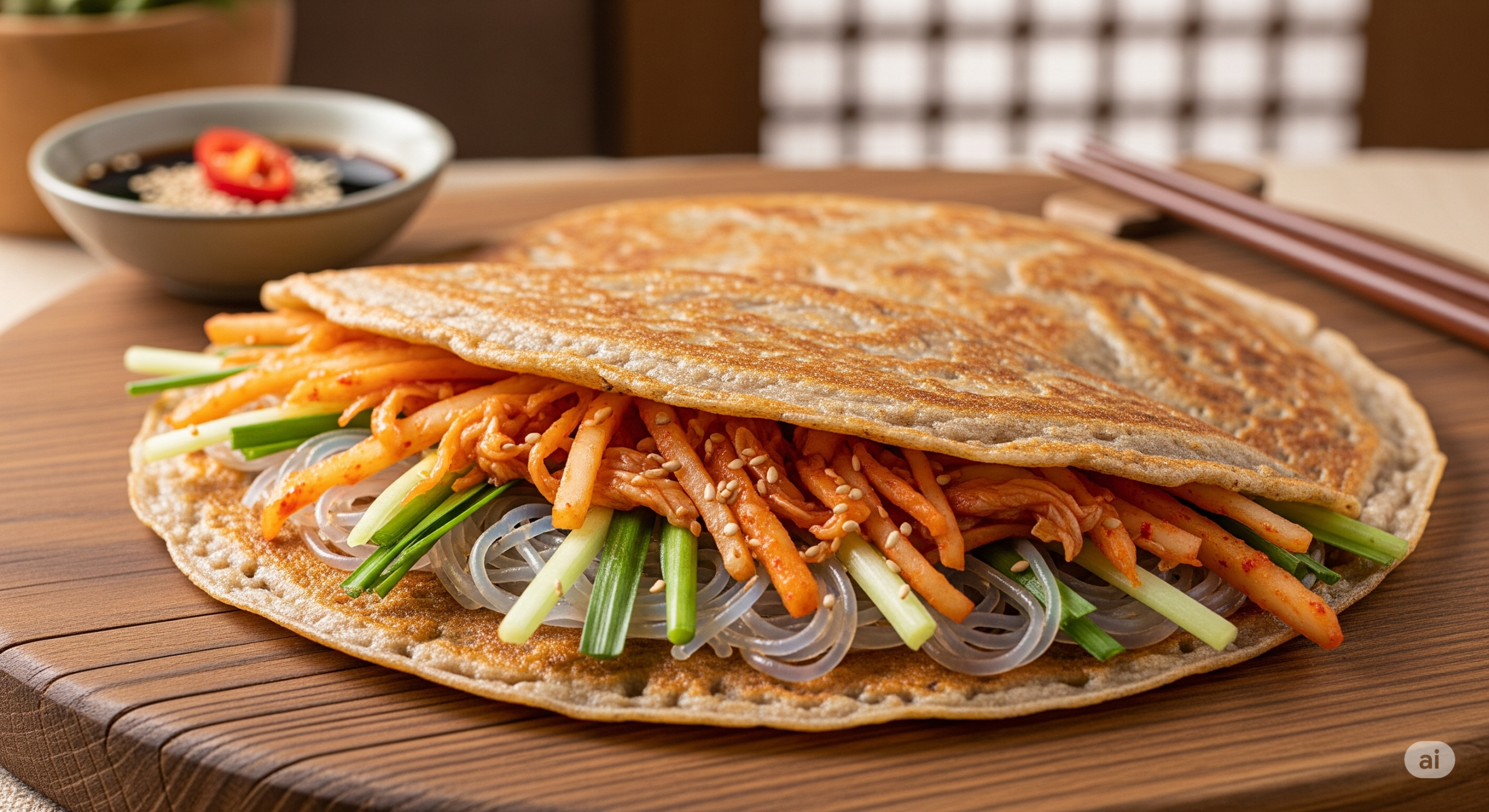1. The ‘Flour’ Determines the Glycemic Response of a Pancake
The most crucial factor determining the blood sugar response of a pancake (jeon or buchimgae) is the ‘type of flour’ used as the main ingredient for the batter. The glycemic index (GI) and dietary fiber content vary greatly depending on the flour used.
2. Flour Pancake vs. Buckwheat Pancake
– Flour Pancake: Most pancakes we commonly eat, like green onion pancakes (pajeon) or kimchi pancakes (kimchi-jeon), are made from refined ‘white wheat flour.’ White flour has very little dietary fiber, is digested quickly, and spikes blood sugar.
– Buckwheat Pancake: Buckwheat pancakes (memil-jeon) and buckwheat crepes (memil-jeonbyeong), which are local dishes from Gangwon province, use ‘buckwheat flour’ as the main ingredient. Buckwheat is a whole grain rich in dietary fiber, protein, and a component beneficial for vascular health called ‘rutin.’ Thanks to this abundant fiber, a batter made from buckwheat raises blood sugar much more gradually than one made from wheat flour.
3. ‘Better’ Does Not Mean ‘All You Can Eat’
While it is clear that buckwheat pancakes are a better choice than flour pancakes, caution is still needed during consumption.
– The Problem of Oil: The oil used in the pan-frying process increases the total calories of the dish.
– Portion Control: Buckwheat’s main component is still carbohydrates, so eating a large amount will naturally raise your blood sugar.
– Buckwheat Content: Many commercially available buckwheat flours are mixed with wheat flour, so it is better to use a flour with a high buckwheat content.
Summary: When you want to eat pancakes, choosing a ‘buckwheat pancake’ made with the whole grain buckwheat flour instead of refined wheat flour can help you manage your post-meal blood sugar much more stably, thanks to its rich dietary fiber. This is a wiser choice for a person with diabetes.


Leave a Reply